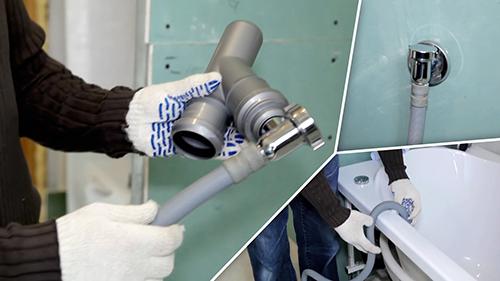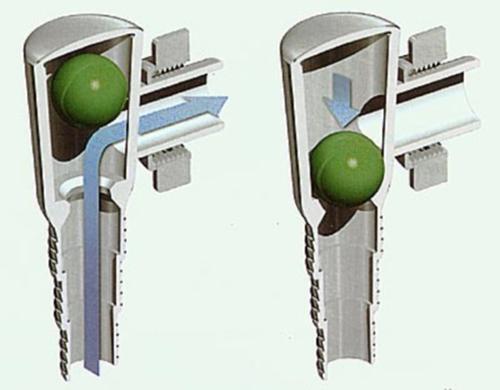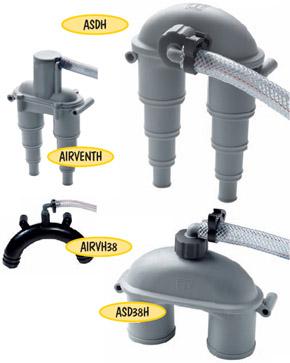Modern automatic washing machines independently both pump water into the drum and drain it into the sewer. To avoid the reverse flow of water, special valves are used: for clean water, inlet, and for waste, a check or anti-siphon. The latter prevents dirty water from penetrating back into the apparatus.
An anti-siphon for a washing machine is a piping element, usually made of plastic, of small size, having a tip for connecting to a hose and a reverse valve inside. As a rule, it comes with an automatic machine, but sometimes you have to purchase it separately..
You can do without a non-return valve. It is enough to strictly adhere to the rules for installing the device - the drain hose must be at a certain height in relation to the sewer (usually this height is half a meter).
When is a check valve needed?

There are only two cases when it is necessary to install an antisiphon:
- If the connection is made by inserting into the drainage.For example, when you connect the washer drain to the sink siphon. In this case, a “siphon effect” may occur and the waste water will flow back into the device. This is where the non-return valve on the drain hose of the washing machine comes to the rescue. How to recognize the "siphon effect"? It's pretty simple: the washing process can be delayed for a long time, the quality of cleaning clothes during washing will drop sharplyand the consumption of electricity and water will also increase.
- When for some reason it is not possible to mount the drain hose at the desired height, or the height is too low for the “siphon effect” to disappear.
How does an antisiphon work?

The principle of operation of the element is quite simple. When the drain program in the machine is triggered, pressurized water flows through the valve, opening it. But after the liquid flow stops, the valve closes automatically, thereby sealing the connection and preventing sewage water from entering the drain hose of the device. The design of this element allows it to be installed anywhere on the pipeline.
An air-filled polypropylene ball is used as a locking mechanism in the antisiphon. When the water pressure weakens, it is pressed by the reverse current against the rubber membrane. With increased back pressure, the ball will be even more pressed into the rubber band, thereby not letting the liquid through.
Types of antisiphons

A modern check valve can be of several types:
- collapsible - it will be useful to those who have hard water coming from the water supply system that clogs the valve; you can always take it apart and clean it;
- non-separable - a cheaper option made of plastic;
- mortise - mounted in a pipe by cutting;
- washing - used in sink siphons;
- wall-mounted - has an attractive appearance, but more expensive.
There are no clear rules for choosing an antisiphon. Get the one that suits you best.
Installing an anti-siphon on a washing machine
The installation process is extremely simple. You need to twist or cut one side of the check valve into the sewer pipe, and connect the other to the drain hose of the washing machine. It is impossible to mix up the sides, since the holes are of different diameters, but if in doubt, then read the instructions that come with the valve.
Is it possible to replace the antisiphon with something?
That is unnecessary. The check valve can simply not be used if all the rules for connecting the washer to the sewer are followed. It doesn’t cost too much, so it’s better not to save and install the element, otherwise you can ruin your underwear and nerves with the “siphon effect”.

Comments
Where to buy one?
Thank you so much.
All clear. Everything is detailed.
Super.
The advice was very helpful.
I ran to look for the return valve.
Thanks
The information is very helpful. My washing machine is below the level of the public sewer. A private house and when it turns out to be a blockage, all the muck goes into the car.Tried to put the plumbing is not enough pressure to open it. And I can't find anti-siphon anywhere. Please tell me where can I find it. Sincerely, Anatoly.